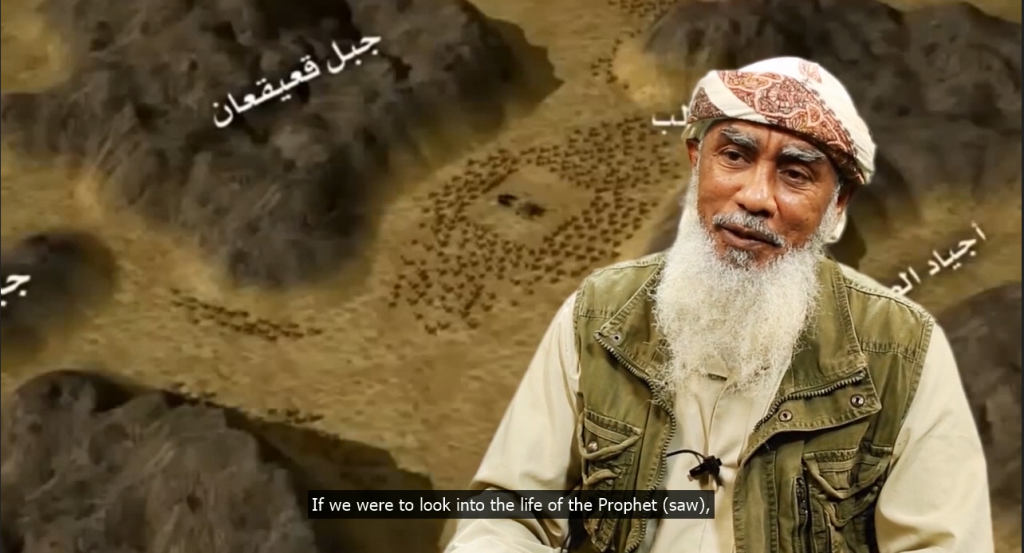
Ibrahim al Qosi, a former Guantanamo detainee, lectures about the importance of “preserving secrets” in an Al Qaeda in the Arabian Peninsula (AQAP) video that was released earlier this week. The 36-minute video, titled “Secrets, its Dangers and the Departure of the Best of Us,” focuses on the US drone campaign against the group.
Interviews with alleged spies who have helped the US hunt down jihadist commanders are spliced together with scenes of Qosi and other AQAP leaders decrying the spies’ actions, as well as the jihadists’ own loose lips and poor tradecraft. The problems posed by cell phones and social media are addressed. Indeed, the video culminates in a stern prohibition against using any devices that fuel the American-led intelligence war against AQAP.
AQAP is clearly concerned that more mid-level and senior management figures could be taken out in the coming months. The US has targeted AQAP leaders in Yemen for years, but the number of airstrikes increased dramatically in 2017.
Qosi is both the first and the last senior AQAP leader to speak in the production. He begins by claiming that the practice of guarding secrets has been important since the time of the Prophet Mohammed.
“The Arabs regard the one who does not keep a secret to be lacking honor,” Qosi claims.
A “secret among the best of people is concealed,” Qosi says. He then brags about his own ability to stay quiet. “A secret with me is a closed house. Its keys are lost and doors sealed.”
Qosi warns those who reveal the jihadists’ secrets, inadvertently or otherwise. “To every Muslim who transgresses with his tongue, may he seek forgiveness from Allah, and know that there are Angels who record each and every word he utters.” Hellfire awaits those who transgress, al Qosi claims.
At the end of the video, the former Guantanamo detainee addresses those who have migrated to Yemen hoping to achieve martyrdom. Do “not let your tongue or your phone be a reason [for] revealing the secrets of your brothers and lead to their imprisonment and killing and allow the enemy to rejoice in our misfortune,” Qosi says.
Qosi served Osama bin Laden in a variety of roles prior to the Sept. 11, 2001 hijackings. He was captured by the Pakistanis while fleeing the Tora Bora region of Afghanistan in Dec. 2001. The group he fled with in late 2001 was dubbed the “Dirty 30” by US officials, as Qosi’s comrades included former bin Laden bodyguards and others who served the al Qaeda chieftain.
Qosi was among the first detainees transferred to Guantanamo in Jan. 2002. In July 2010, he pleaded guilty to charges of conspiracy and material support for terrorism before a military commission. His plea was part of a deal in which he agreed to cooperate with prosecutors during his remaining time in US custody. Qosi was transferred to his home country of Sudan two years later, in July 2012.
By 2014, Qosi had rejoined al Qaeda in Yemen. Qosi was first re-introduced as a senior al Qaeda figure in Dec. 2015 and he has been featured in the group’s propaganda repeatedly since then.
Qasim al Raymi (AQAP’s emir) says the jihadists are an “open book”
Qasim al Raymi, AQAP’s emir, argues that the jihadists’ have no bigger problem than their inability to keep secrets. “Our problem today is the exposure of Muslim secrets,” al Raymi claims. “That’s it! We are an open book; our way of thinking is exposed for the enemy to benefit from.”
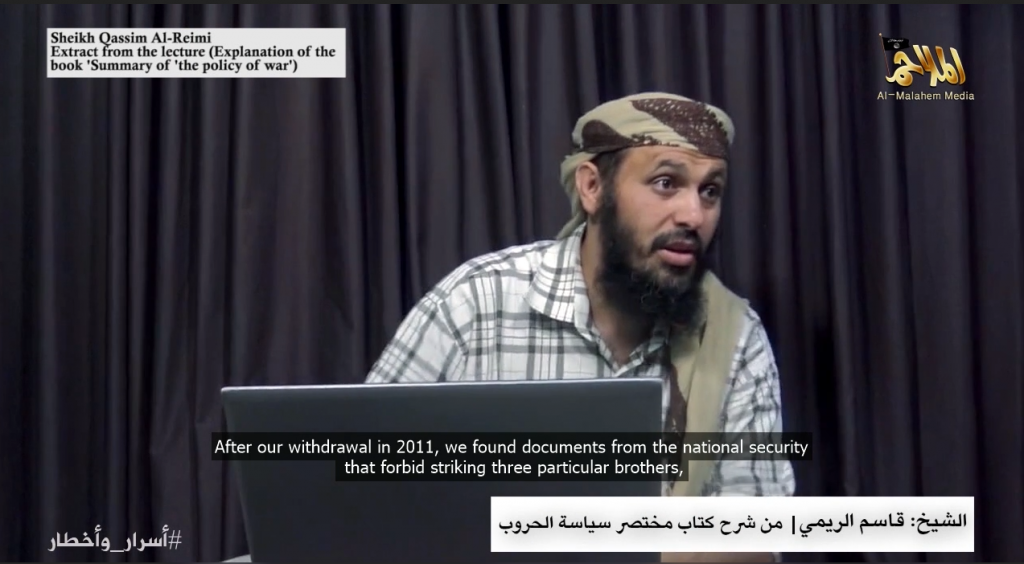
Al-Raymi (seen above) is an al Qaeda veteran who has served as AQAP’s top leader since 2015. In the new video, he raises several problems the jihadists face.
He complains that some “brothers” cannot “hide a secret even from their” wives. “Then the woman gets on the phone and spreads information that so and so is in a particular place. Brothers have been killed by such irresponsible actions of such a woman,” al Raymi claims.
In reality, the men are worse — divulging AQAP’s secrets as they peck away on websites.
“Who is the one exposing the secrets of the Mujahidin? They are the Mujahideen themselves,” al Raymi laments. “When you see what is going on in the web forums you will be surprised. The transgression against the work of the Mujahidin that goes on is unbelievable. They expose [a] Mujahidin’s visions and plans, and then go on to…open debate in a chat room…what is (the aim of) this debate?”
Then there are cell phones. One of the “spies” interviewed in the video claims that he marked the location of various AQAP figures by leaving behind cell phones with chips implanted in them.
The “mobile phone” is “a different source of getting information,” one that is “much more dangerous than the one before,” al Raymi says. “Today we consider the mobile phones in our hands as a form of spy agent. An agent that is always with us.”
AQAP’s head honcho makes a remark that deserves additional attention. “We believe that over that last period, especially after our withdraw[al], that most of the drone strikes were due to cell phones.”
Al Raymi means that the US has tracked targets who were either careless with their mobile communications, or were marked by one of the “spies.” It is not clear if the withdrawal he is referring to is the one that occurred in 2016, when AQAP decided to fall back from Mukalla and other points in southern Yemen as a UAE-led coalition approached, or an earlier withdrawal forced by Yemeni forces in 2012.
After the earlier retreat in 2012, al Raymi explains, AQAP “found documents from the national security that forbid striking three particular brothers.” Nasir al Wuhayshi, al Raymi’s predecessor as AQAP emir, had al Raymi inform the trio on the list.
“Why [was] it that it was forbidden to strike them, while they are amongst the best of [the] brothers?” al Raymi asks. It was because they were collating “news” from across AQAP’s operations and the jihadists’ enemies found it useful to monitor their communications. Al Raymi doesn’t name the men, but says “two of them have been killed and one remains” alive.
Another al Qaeda veteran: Ibrahim al Banna
The third major AQAP figure to speak in the video is Ibrahim al Banna, another al Qaeda veteran. Al Banna has been a jihadist for nearly four decades. Al Qaeda first dispatched him to Yemen in the early 1990s. He was tasked with developing tribal relations and other tasks intended to give the jihadists a firm hold in the country. The US designated al Banna as a terrorist in early 2017 and has a standing reward offer of $5 million for information leading to his whereabouts.

“It is upon every Mujahid in the path of Allah to preserve the secrets of his fellow brothers and to be cautious not to unknowingly serve the enemy of Allah, enriching them with information that exposes the operations of Mujahideen, or play a role in the targeting of our brothers and letting the enemy attain a victory which he has never even dreamed of,” al Banna (seen above) cautions.
“And may the brothers know that the mobile phone is a complete[ly] capable spy, that transfers information,” al Banna warns. An “electronic chip” inside the phone “is ready to guide a missile.”
“It is as if the owner of the phone is saying, ‘here I am and this is my location’,” al Banna says.
Al Banna dresses down those jihadists who are not more careful when they speak.
“A mobile phone is a spy to its owner, a spy to the group, especially if it is in the hands of a man who does not differentiate between what to say and not to,” he explains. “It is a roaming electronic chip in the hands of its bearer and a danger to his brothers who accompany him. It is a tool that pinpoints houses and location[s] of the brothers. On top of all this it is the only way a spy can communicate and send information directly and promptly from the spy to the enemy.”
Prohibition against cell phone and internet use
AQAP doesn’t want to lose any more commanders to shoddy security. So the video ends with a remarkable prohibition, contained in a “Circular to the Mujahideen Brothers in the Arabian Peninsula.” The text of the circular, which is dated Dec. 3, 2017, was also disseminated on al Qaeda-associated web sites.
AQAP opens the command by complaining that some have been “exposing secrets and passing on information directly to individuals or via the mobile phone or social media.” There is a “lack of restraint and control on such matters,” with rampant “carelessness and recklessness.” It is because of the “great dangers” these practices create for the “jihad, Mujahideen and Muslims as a whole,” that AQAP ordered a “complete prohibition on the use of phones and means of communication through the internet.”
“To whomever disobeys this, [he] will face a penalty with regard to the level of his crime,” AQAP warns.
The missive ends with another cautionary note that appears to be addressed to the jihadists working on media. “Whosoever uses words in conducting his work, then he should limit his words to what is necessary only.”
To underscore the security challenges that the jihadists must tackle, AQAP even produced a pie chart summarizing the various causes of personnel losses. Screenshots of the pie chart can be seen below.
Interestingly the very first cause listed is “Saying this person is so and so,” which likely means that someone (a spy) identified the location and identity of a specific individual who was being targeted by the US.
“Such a statement has contributed to the death of over thirty Mujahideen in the path of Allah,” AQAP claims. “Most of those killed because of this statement are those in charge of matters concerning fellow Mujahideen,” meaning leaders in the group.
AQAP identifies one such leader whose location was given to the US or its allies: Sheikh Abu Sufyan As-Shihri, otherwise known as Said al Shihri. AQAP confirmed al Shihri’s death in 2013. Like Qosi and a number of other AQAP commanders, al Shihri was once held at the us detention facility in Guantanamo. At the time of his death, al Shihri was serving as AQAP’s deputy emir.
The group’s latest video says that he was injured after his location was compromised, presumably by a spy. It is not clear if he died from those wounds, or in a separate drone strike carried out later.
AQAP pie chart documenting alleged causes of casualties:
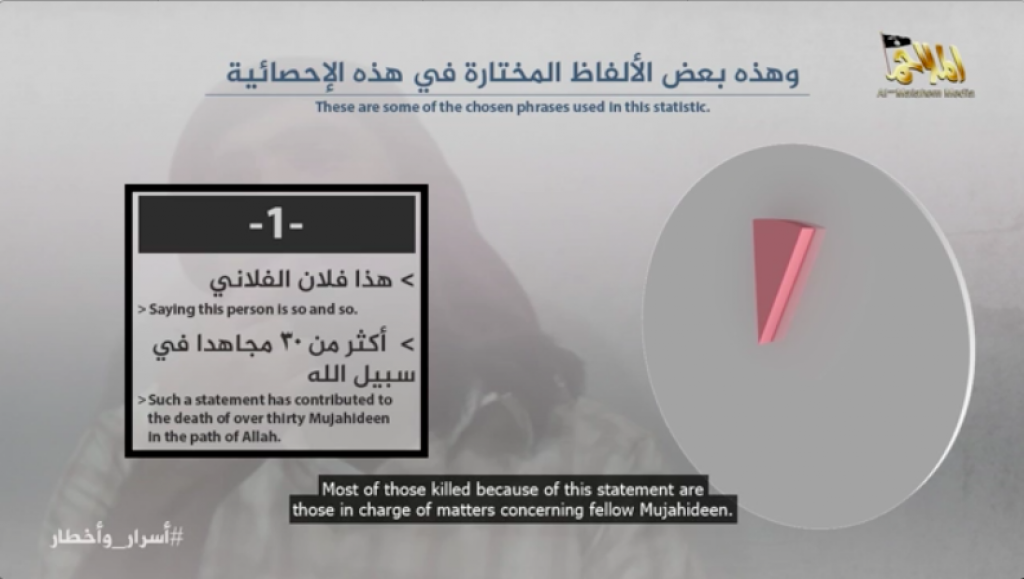
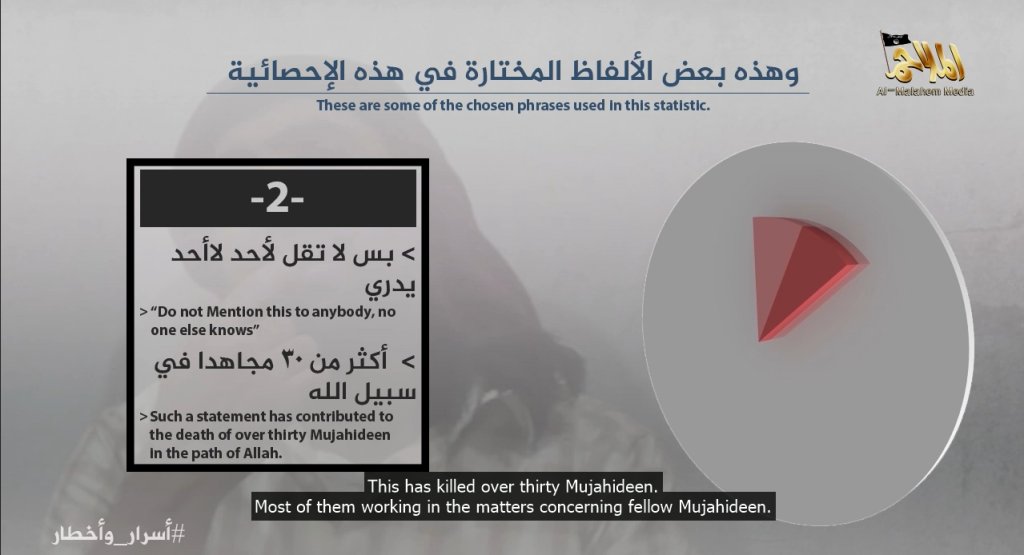
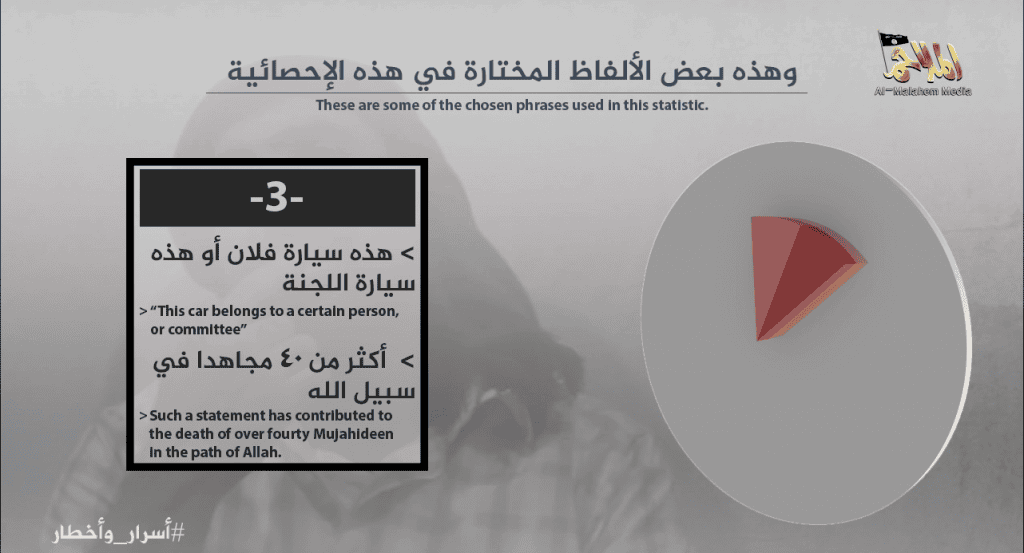
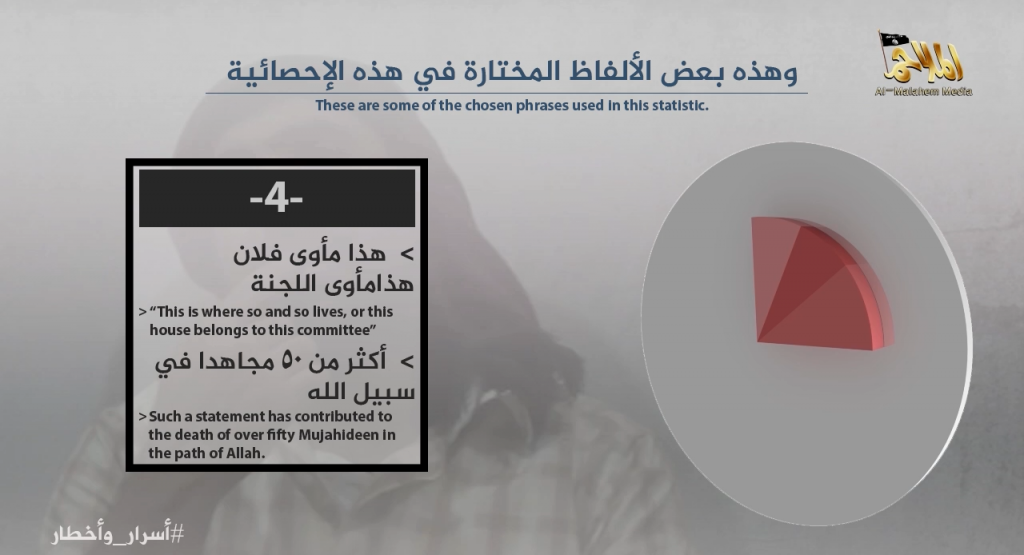
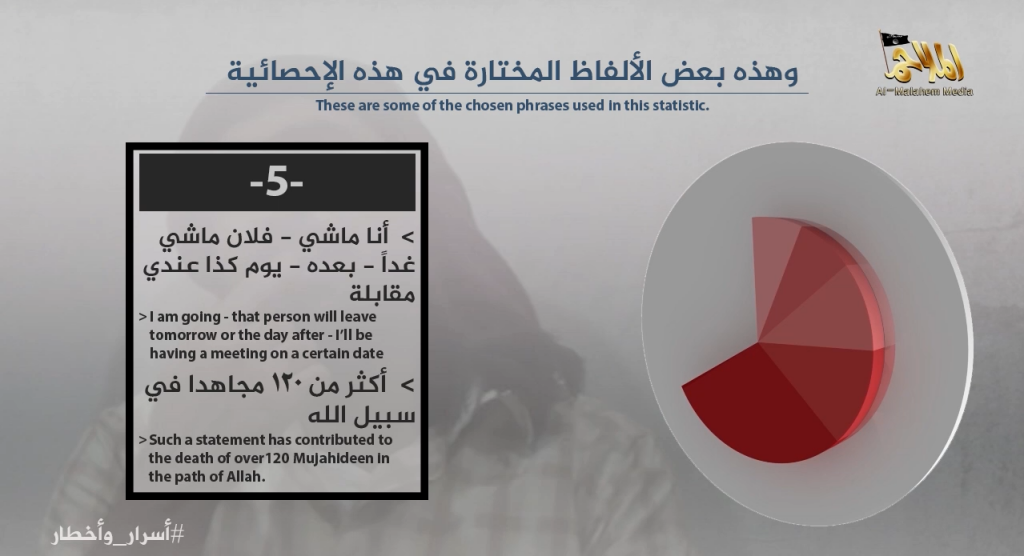
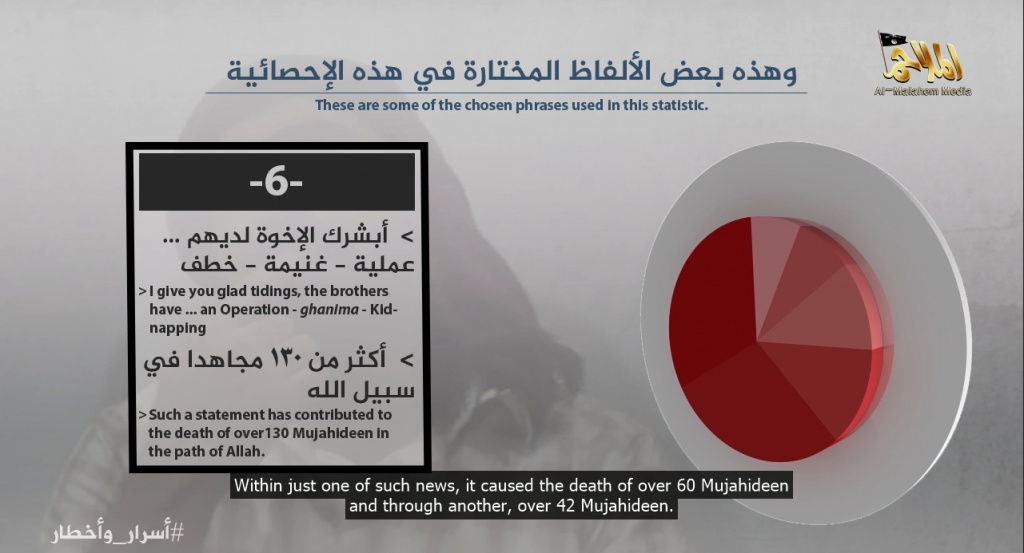
from Long War Journal – FDD's Long War Journal http://ift.tt/2EYHYH8
via Defense News


No comments: